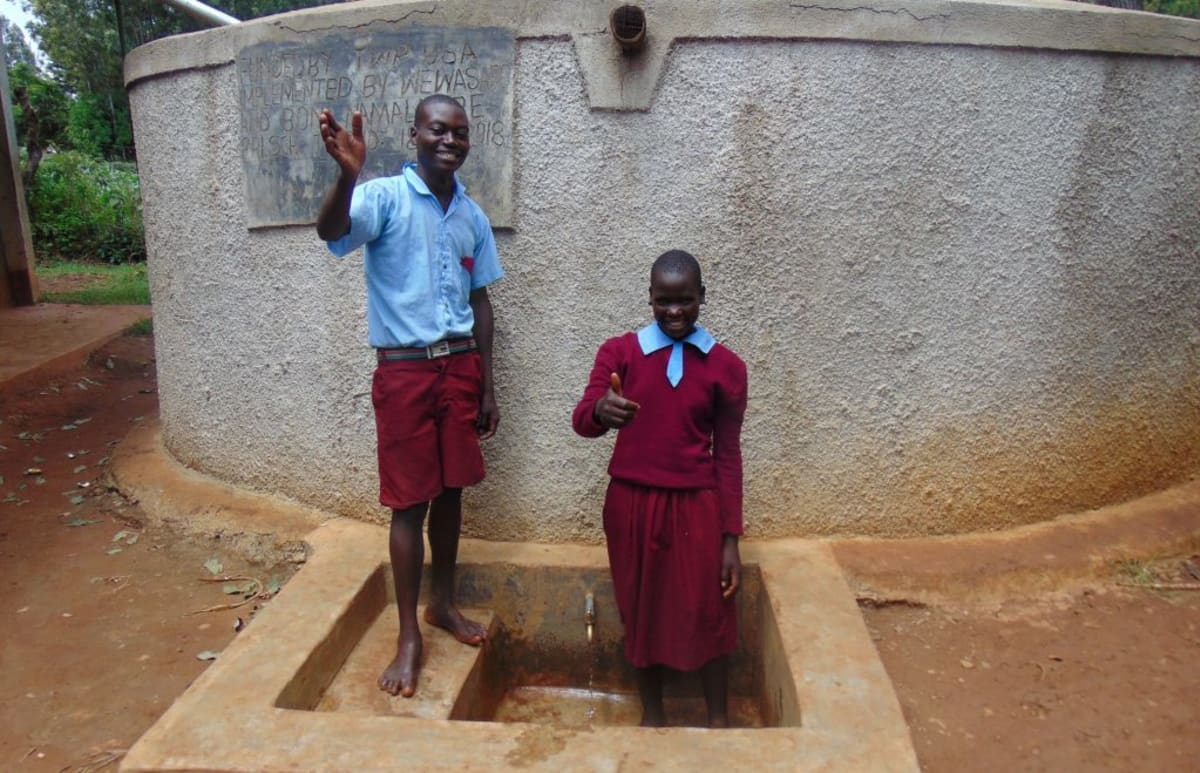Students who attend Namalasire Primary School must wake up around 6:30am to prepare for school. The day doesn't start with breakfast or bathing. Instead, a child picks up their empty jerrycan and goes on a search for water.
They'll need that water to get through the school gate in the morning. These students most often fetch water from running streams. If they didn't have time to find water before breakfast, they'll search for open sources along the path to school. This water is used for drinking, cleaning, and cooking.
Study hall begins at 7am, after which they break up into groups to clean their classrooms and toilets before normal lessons. They begin classes at 8am that go until lunch break. The class preparing for national examinations eats lunch at school while the rest of the students are sent home. The day ends with clubs and activities out on the open field.
There are 820 students enrolled at a school that doesn't have adequate water or facilities.
Water
Students store the water they carried to school in a plastic tank of 1,350 liters, which is also used to harvest water during the rainy season. The students who return home for lunch must also refill their jerrycans with water to carry back in time for 2pm class.
If they run out of water in the late morning or after lunch, the students must go back out to search for more. This interrupts class and is quite a long trip since the administration prefers students walk to a clean water source that is more than a mile each way. A neighboring school has a water well, but it is too shallow and dries up during dry seasons or when it's overused.
The administration is concerned that the water students carry from home is contaminated. Students often cite waterborne diseases like typhoid or cholera as the reason for recurring absences.
Sanitation
There are too few latrines for too many students. The latrines we visited are in very poor condition and cannot be rinsed with water because of the lack thereof. Because of this, students often relieve themselves in other private areas behind buildings or the bushes surrounding the campus.
We saw a handwashing station there, but it was set aside for staff use only.
What we can do:
Training
Training will be held for two days. The facilitator will use PHAST (participatory hygiene and sanitation transformation), ABCD (asset-based community development), CTC (child to child), lectures, group discussions, and handouts to teach health topics and ways to promote good practices within the school. The CTC method will prepare students to lead other students into healthy habits, as well as kickstart a CTC club for the school.
Handwashing Stations
This CTC club will oversee the new facilities, such as handwashing stations, and make sure they are kept clean and in working condition. The two handwashing stations will be delivered to the school, and the club will fill them with water on a daily basis and make sure there is always a cleaning agent such as soap or ash.
VIP Latrines
Two triple-door latrines will be constructed with local materials that the school will help gather. Three doors will serve the girls while the other three serve the boys. And with a new source of water on school grounds, students and staff should have enough to keep these new latrines clean.
Rainwater Catchment Tank
A 50,000-liter rainwater catchment tank will help alleviate the water crisis at this school. The school will also help gather the needed materials such as sand, rocks, and water for mixing cement. Once finished, this tank can begin catching rainfall that will be used by the school’s students and staff.
We and the school strongly believe that with this assistance, standards will significantly improve. These higher standards will translate to better academic performance! Mr. Joel Murenga is a parent of one of the students attending this school. "You will really save our children from the burden of going out and wasting a lot of time looking for water to use in school," he said.
This project is a part of our shared program with Western Water And Sanitation Forum (WEWASAFO). Our team is pleased to provide the reports for this project (edited for readability) thanks to the hard work of our friends in Kenya.

 Rainwater Catchment
Rainwater Catchment
 Rehabilitation Project
Rehabilitation Project


































